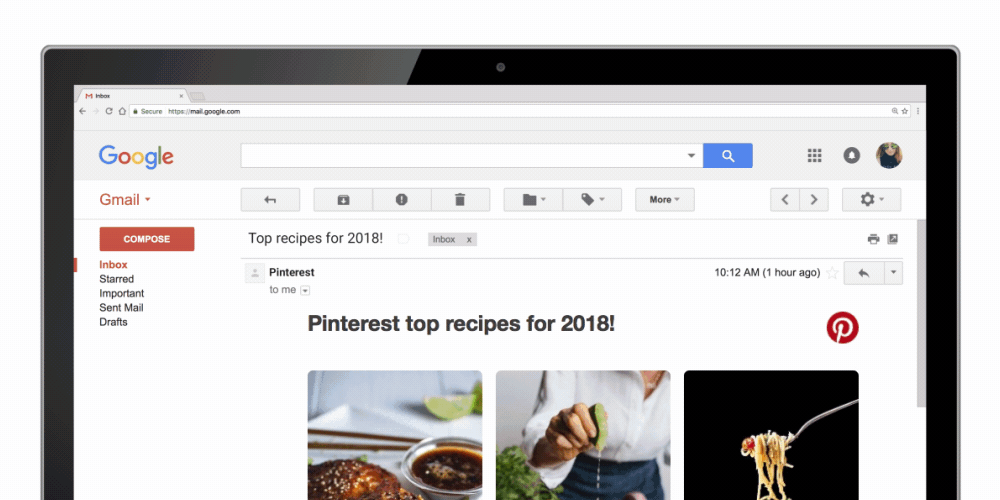testsetset
The accelerated mobile pages (AMP) project has come a long way since Google first announced the initiative to the world back in 2015. The open source AMP framework, which is designed to enable blazing-fast and efficient mobile web pages, is now used by 31 million domains. Today, Google announced an extension of the AMP program to include another popular communications medium.
The internet giant unveiled the Gmail developer preview of AMP for email, a web-like experience designed to make emails more engaging and interactive. One of the key benefits of AMP for email will be that content within an email can be updated, and recipients will be able to browse email content much like they would a web page.
So an email from Pinterest, for example, could contain actionable content, allowing users to Pin content to their own Pinterest account without leaving Gmail. Or they could complete a form to arrange a meeting, fill in a questionnaire, and do just about anything — all from within the email itself. It’s clear that marketers will be a major target audience here.

Above: AMP for Email
Third-party companies will, of course, need to sign up to AMP for email to use this product. But Google naturally holds a lot of sway and said that it already has a handful of companies on board — in addition to Pinterest — including Doodle and Booking.com.
June 5th: The AI Audit in NYC
Join us next week in NYC to engage with top executive leaders, delving into strategies for auditing AI models to ensure fairness, optimal performance, and ethical compliance across diverse organizations. Secure your attendance for this exclusive invite-only event.
The launch comes on the same day as Google unveiled the AMP story format, which brings a Snapchat-like interactive format to the mobile web and features slides, graphics, videos, and more.
It’s true that email has been challenged by the rise of mobile messaging apps like WhatsApp, but it remains healthy across such realms as business, commerce, and marketing. Indeed, reports indicate that some 270 billion emails were sent each day in 2017, up from 205 billion in 2015. So AMP for email could find a rather sizable niche.
“Many people rely on email for information about flights, events, news, purchases, and beyond,” noted Gmail product manager Aakash Sahney. “With AMP for Email, it’s easy for information in email messages to be dynamic, up-to-date, and actionable.
AMP for email will be rolling out for Gmail later this year, once it graduates the developer preview. But, as with the broader AMP initiative, Google is eager to stress that this isn’t a purely Google-focused product — the company wants other email client providers to embrace it.
“Because AMP for email is an open spec, we look forward to seeing how other email clients will adopt it, too,” added Sahney.

